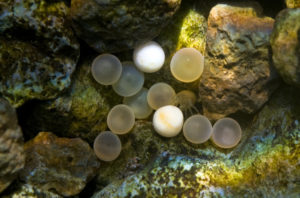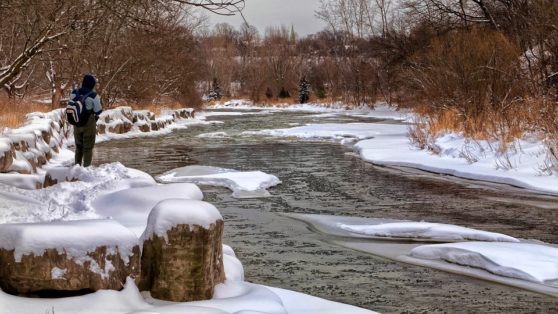Take it Easy
Due to the cooler temperatures, fish are moving slowly and you should, too. So slow down and think small. This will help give time for the fish to actually strike. You can enjoy a much slower and relaxed state of fishing.
Take Advantage of the Summer Busy Areas
Since it's not the middle of summer, you can enjoy some nice fishing in areas that are usually packed. All the way up to mid-April, you might run into about half the amount of fly fishers than usual. Winter fishing is a great chance to enjoy those areas before the warm crowd comes in.

Mind the Redds
Be mindful of where you step. As winter approaches spring, rainbows and cutthroats will be spawning. Avoid walking where there are distinct gravel nests in a scoured circular or oval depression. These "rubbed out" areas are much clearer than the rest of the riverbed, so be aware of where you step to avoid harming the unborn eggs or first born alevins.
Check out the Mind the Redd's organization here with more tips on safe river wading.

Midges
"Even on a tailwater, cold days and winter weather will more or less shut down the standard trout menu. Mayflies, caddisflies, and stoneflies can’t tolerate cold air temperatures very well, even if the water remains at a constant mild chill. Thus, from about mid-November to early March, most fishing anywhere north of Florida is going to involve midges."
You can read Orvis' post about How to Fish Midge Patterns in the Winter here.
You can also read the 8 Must-Have Flies for winter fishing here.

Ice is Probably not Present
Rivers rarely freeze in the winter unless you are way up in the mountains. Most tailwaters, any rivers or streams coming from a dam, will not be frozen and provide an opportunity to fly fish even in the coldest of months. If ice is present, always be careful and make sure it is thick enough before walking out.



